How to grow potatoes in a container
Find out how to grow potatoes in a container with our helpful guide
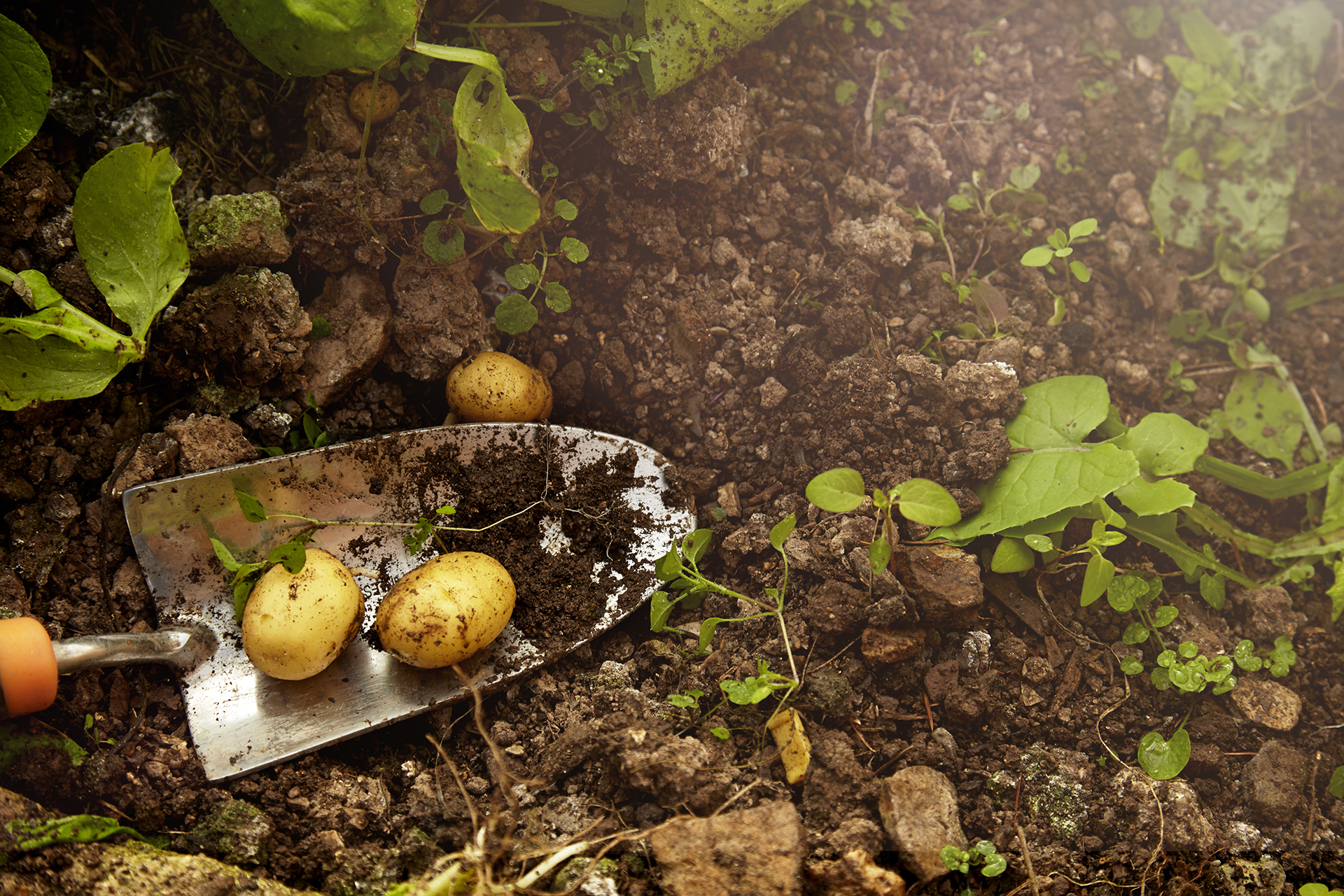

Learning how to grow potatoes in a container is actually easier than growing potatoes in a vegetable plot. Plus, potatoes are one of the easiest vegetables to grow yourself, making them the perfect choice for beginners.
Growing potatoes in containers rather than beds does away with the challenge of digging to harvest and ensuring you haven't missed any potatoes that will return unplanned next year. Harvesting potatoes grown in containers is easy: simply tip your container onto a tarp and pull out your potatoes. There are no worries about some being missed or reseeding either as they're easier to spot.
Another benefit of finding out how to grow potatoes in a container is that anyone can do it. You don't even need a garden, you can easily grow potatoes on a balcony or in a courtyard.
Whether you want a quick and easy method or are looking to experiment with different varieties that you can't buy in the supermarket, here, we explain how to grow potatoes in a container – our full step-by-step guide to how to grow potatoes has tons more tips, including advice on chitting, too.
How to grow potatoes in a container
There are several different options for choosing containers in which to grow potatoes – these range from purpose-built potato pots to DIY upcycled approaches. No matter which container you decide to grow your potatoes in the general method is much the same.
- Place a few inches of soil in the bottom of your container.
- Then place your chitted potatoes in this soil, the number of chitted potatoes you plant will depend on the size of your container.
- Cover the chitted potatoes with another few inches of compost and water well.
- Place in a light, frost free place and leave to grow.
- 'You can plant chitted seed potatoes in containers – plant early varieties in late March and main crops in April,' advises garden expert Leigh Clapp. 'They grow best in fertile, slightly acidic loose soil, and need regular watering.'
- Once your leaves break through the soil, cover with more compost until the leaves are covered.
- Repeat this every time the new leaves appear until your pot is full. By preventing the plant from putting all its energy into leaves and flowers, it will focus on producing large potatoes.
- Be sure to feed weekly and water when the soil feels dry to the touch.
- Once you cannot fill your pot any further allow the leaves to continue to grow and then to flower.
- You can harvest potatoes 'when the leaves and stems start to turn yellow and flop over,' says Jessica Walliser horticulturist at Hobby Farms.
- To do this, simply empty your pot out onto a tarp and gather together your crop.
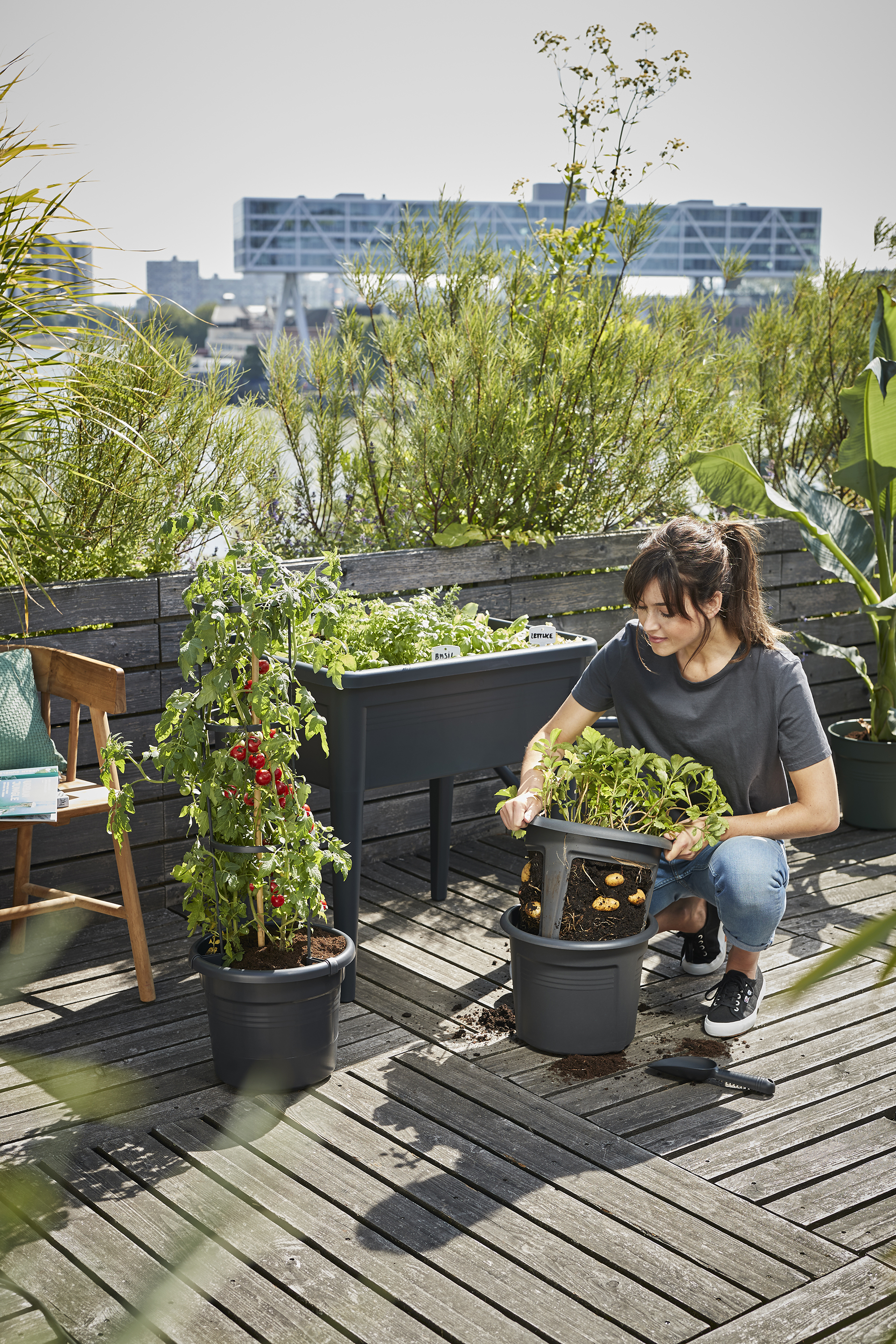
To grow potatoes in a bag ensure it is at least 8 to 10 gallons, though you can use larger bags if you prefer.
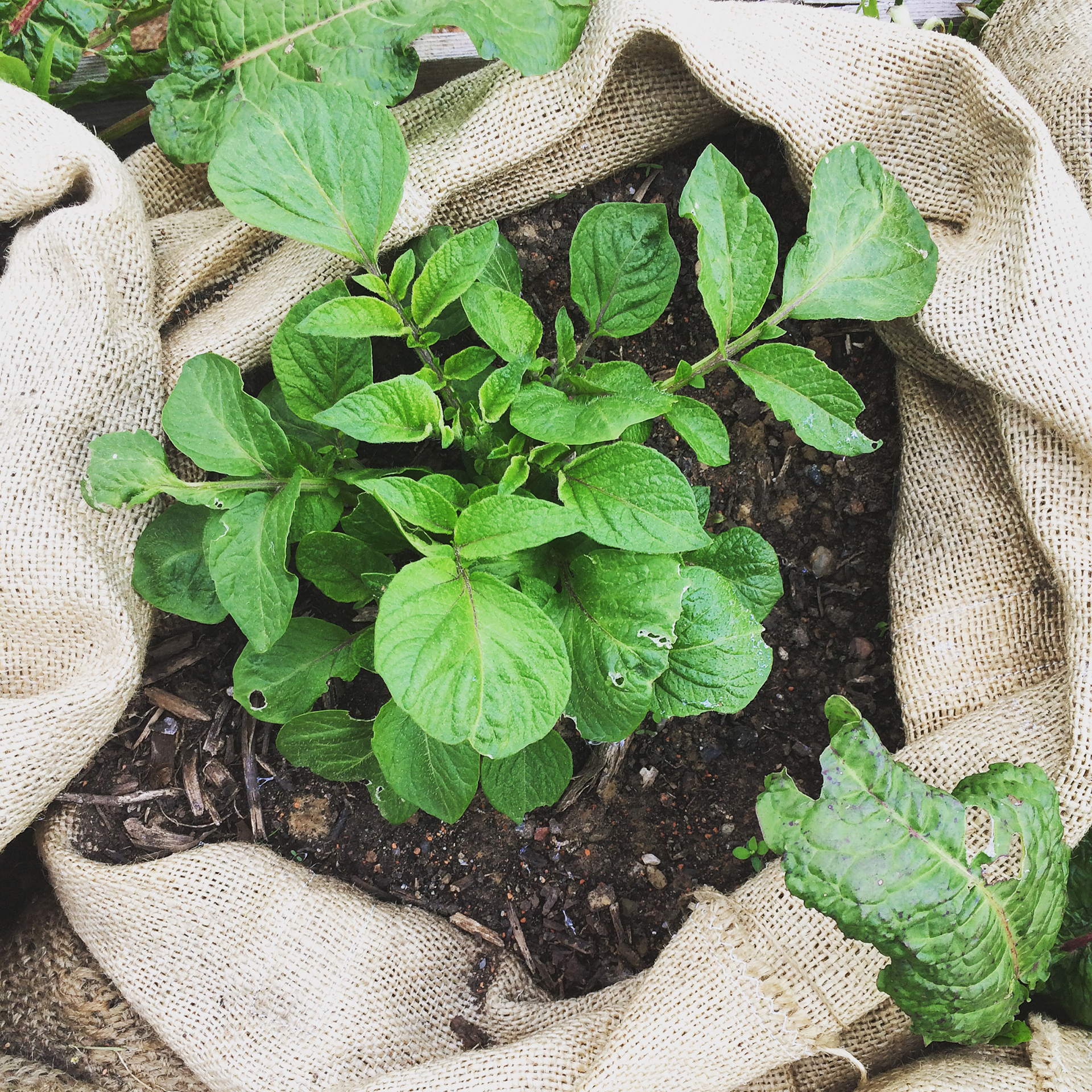
Planting potatoes in a tire
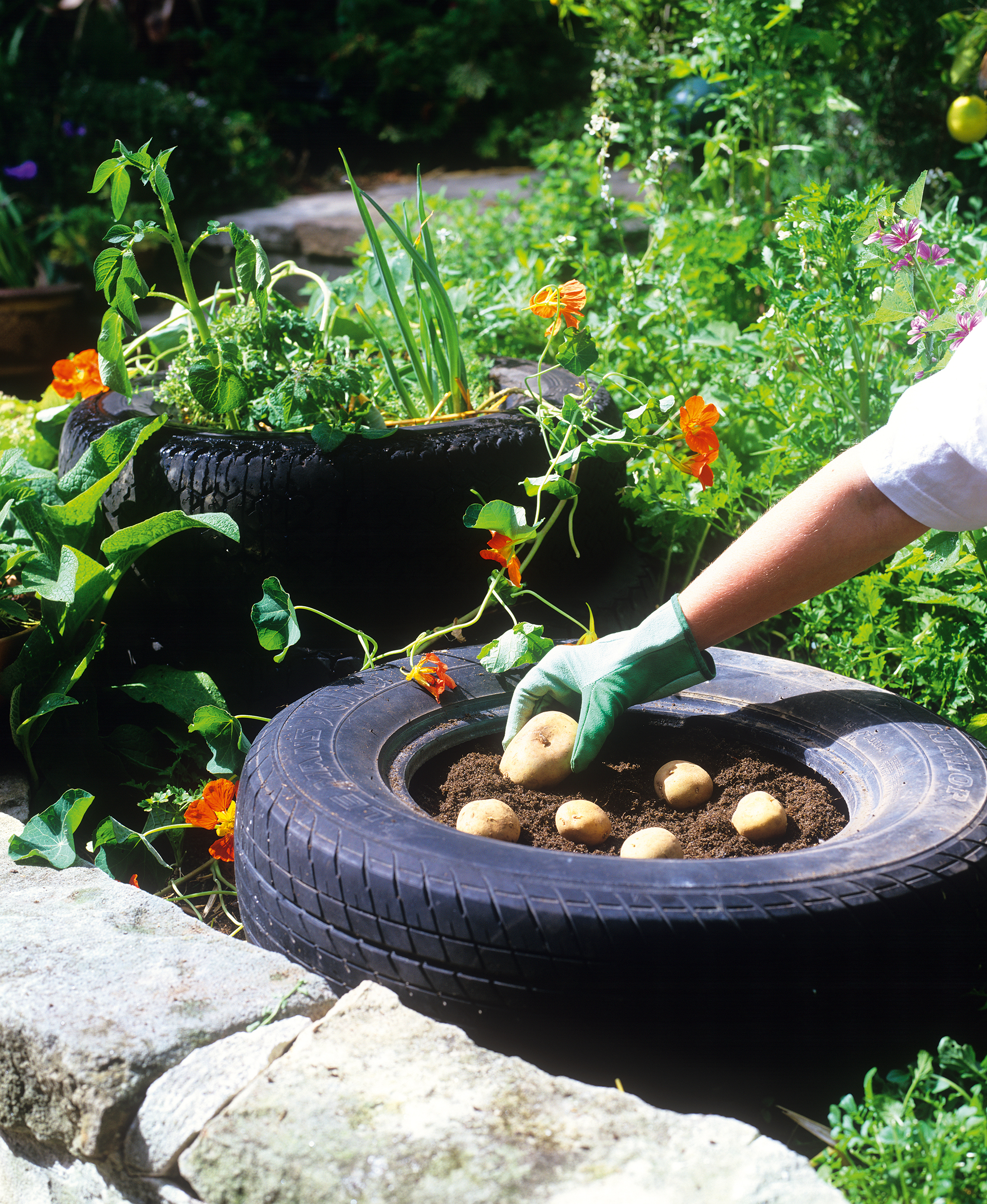
If you are looking for a low-cost, sustainable method to how to grow potatoes in a container then old tires are the perfect solution. For this method you will need compost, seed potatoes and several clean tires.
- Start by laying your tire on top of a concrete slab in your garden. It can be on a patio or just a slab laid in your vegetable plot. If you put your tire directly onto the soil your potatoes will grow into the compost below rather than staying contained.
- Fill the tire with compost.
- Plant your chitted potatoes about 2 inches deep with the eyes pointing upright.
- Aim to plant around 3 to 4 potatoes per tire.
- Once your potato plant has grown leaves, then stack another tire on top of the first and fill with compost, covering the leaves.
- Repeat this process every time the leaves appear until you have four or five tires stacked.
- Once you have a stack of four or five tires let the leaves continue to grow and flower, then once they start to die back and go yellow, the potatoes will be ready to harvest.
- To harvest, simply remove the tires and reveal your potatoes.
- Ensure you store potatoes correctly to ensure they remain fresh.
Can you grow potatoes in a 5 gallon bucket?
You can grow potatoes in a 5 gallon bucket but be sure to drill holes in the bottom of your bucket to ensure it has good drainage. You can then fill the container with compost and plant two potatoes per 5 gallon bucket and 'then plant about 8 inches deep with the eyes facing up, but only top with 4 inches of soil. Add more soil as the plant grows,' advises gardening expert, Leigh Clapp.
This method applies to any pot – whether you use a large traditional plant pot or even upcycle a trash-can. Just ensure that whichever pot you use, it has ample drainage holes to prevent your plant becoming waterlogged and your potatoes rotting.
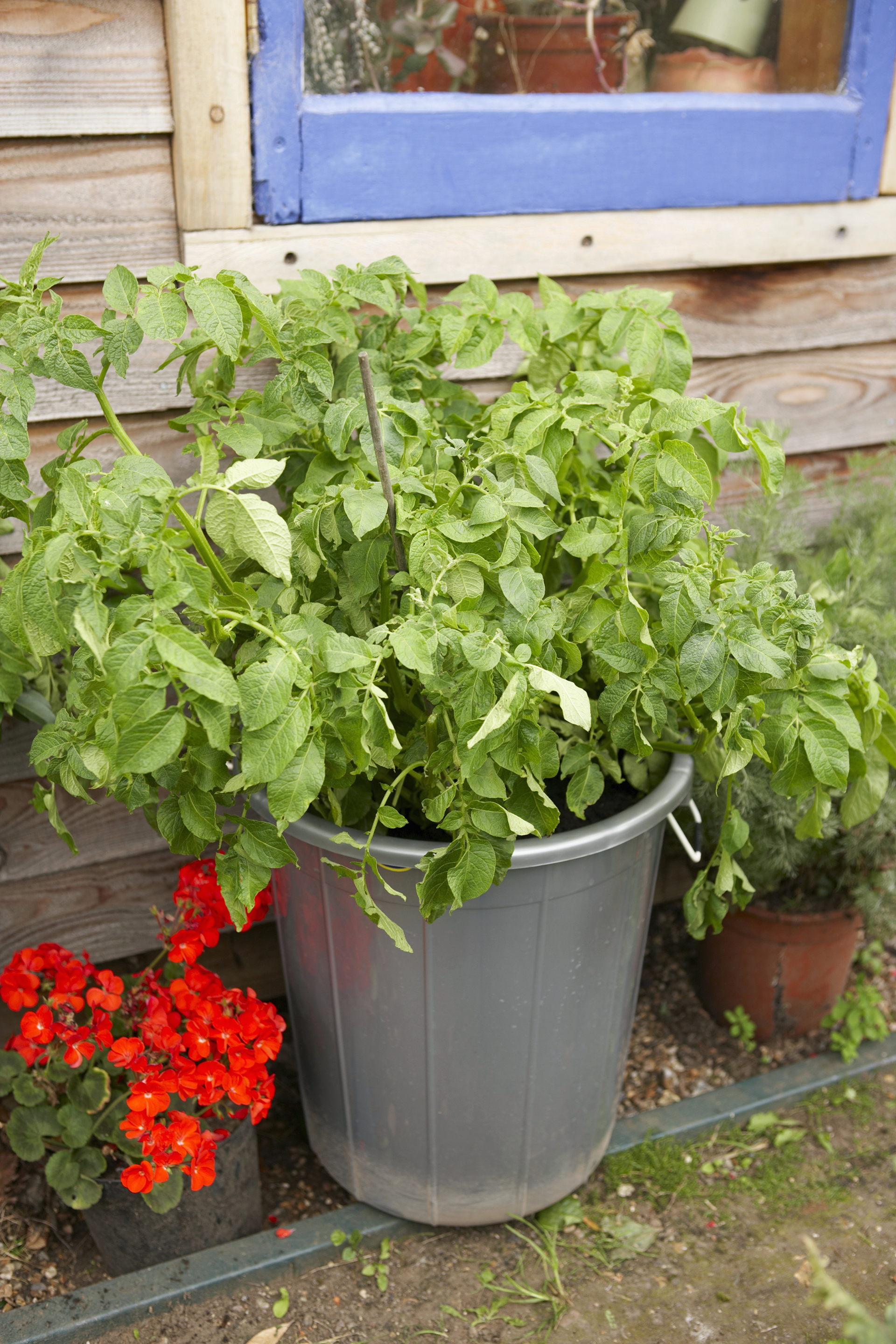
How many potatoes can I plant in a container?
The number of potatoes you can plant in a container depends on the size of the container. When figuring out how many gallons of space you need, follow the rule that each potato plant needs about 2.5 gallons. So a 5 gallon bucket will support two potato plants while 10 gallon bag will cater to four potato plants. It completely depends on how many potatoes you wish to harvest.
How long do potatoes take to grow in a container?
It takes 10 to 13 weeks for potatoes to grow in a container from planting the chitted potatoes, advises PL's garden expert Leigh Clapp.
However, the exact amount of time from planting to when you harvest potatoes also depends on what type of potatoes they are. First early potatoes are the quickest to harvest needing only 10 weeks while maincrop potatoes are the longest to harvest and take up to 20 weeks from planting.
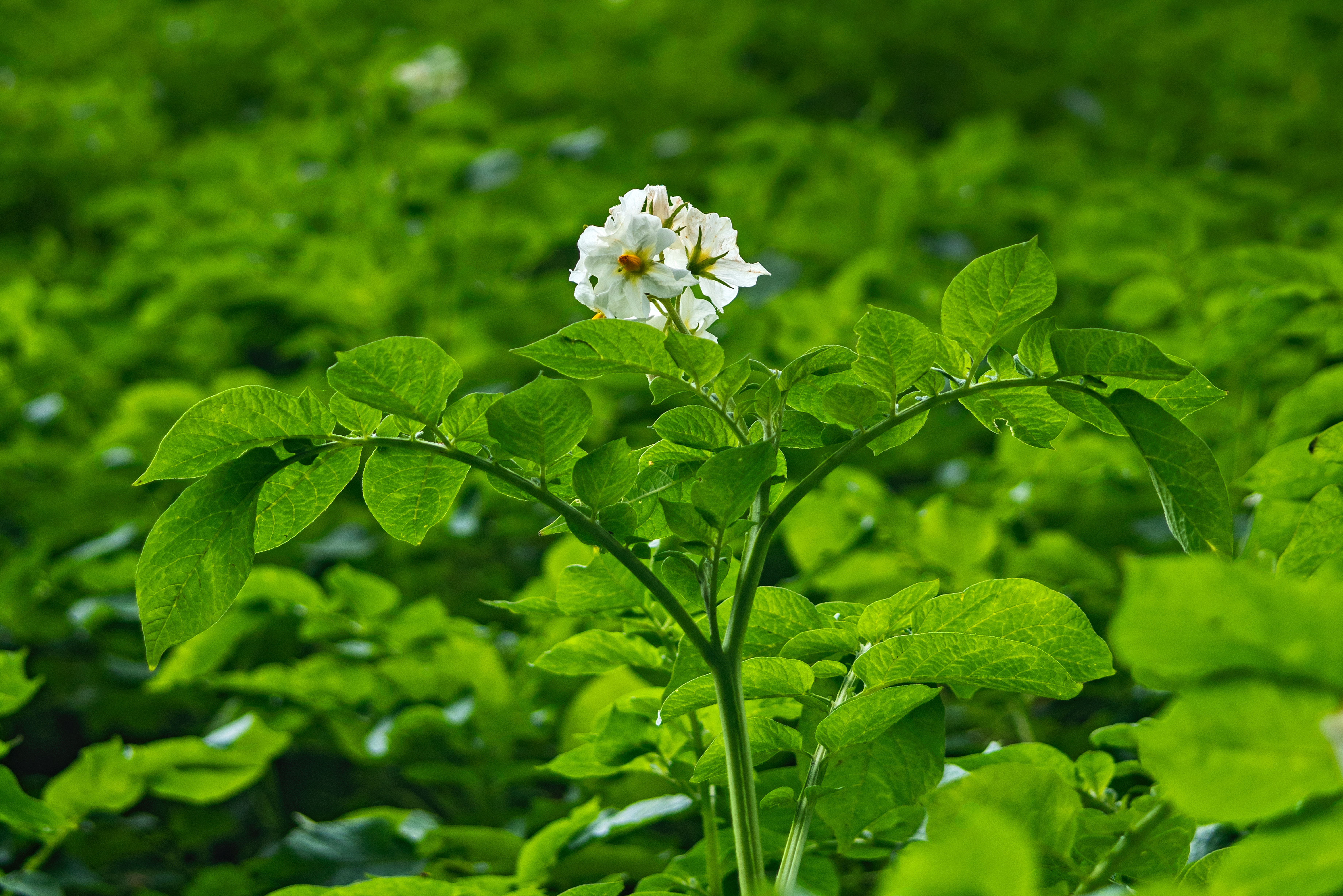
Sign up to the Homes & Gardens newsletter
Design expertise in your inbox – from inspiring decorating ideas and beautiful celebrity homes to practical gardening advice and shopping round-ups.

Having graduated with a first class degree in English Literature, Holly started her career as a features writer and sub-editor at Period Living magazine, Homes & Gardens' sister title. Working on Period Living brought with it insight into the complexities of owning and caring for period homes, from interior decorating through to choosing the right windows and the challenges of extending. This has led to a passion for traditional interiors, particularly the country-look. Writing for the Homes & Gardens website as a content editor, alongside regular features for Period Living and Country Homes & Interiors magazines, has enabled her to broaden her writing to incorporate her interests in gardening, wildlife and nature.
-
 Kris Jenner's favorite air fryer, the Ninja Crispi, is the perfect small kitchen solution – it deserves a place on the most compact of countertops
Kris Jenner's favorite air fryer, the Ninja Crispi, is the perfect small kitchen solution – it deserves a place on the most compact of countertopsKris approves of this compact yet powerful air fryer, and so do our own kitchen appliance experts, praising it for its multifunctionality
By Hannah Ziegler Published
-
 Ina Garten's storage pantry is an insightful window into all of the best cookware used by the chef – and it's easy to recreate on your kitchen shelves from $48
Ina Garten's storage pantry is an insightful window into all of the best cookware used by the chef – and it's easy to recreate on your kitchen shelves from $48The beautiful dishware in The Barefoot Contessa's Hamptons pantry showcases the tools she uses most often to cook – this is exactly how you replicate it
By Sophie Edwards Published